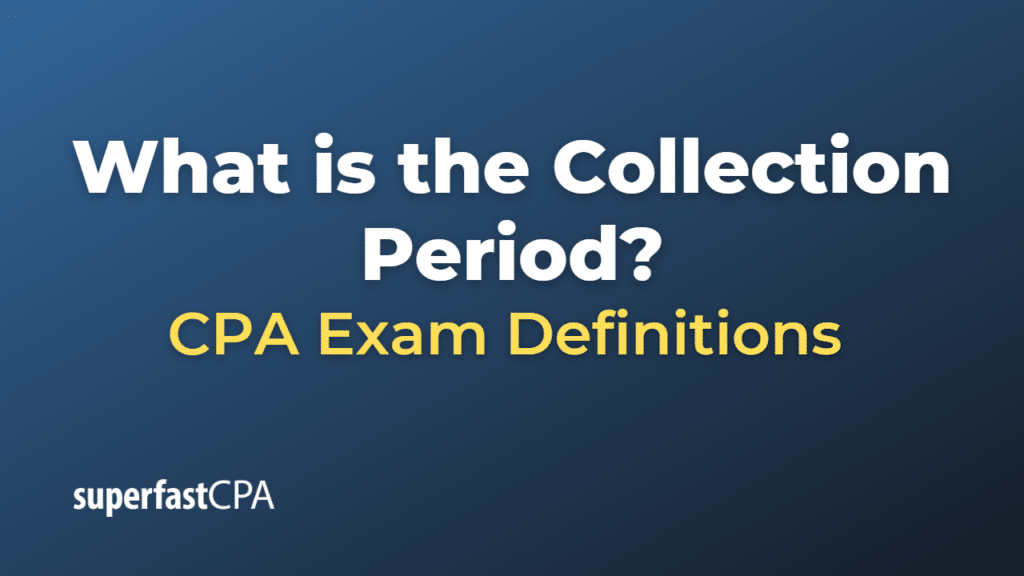Collection Period
The collection period, also known as the accounts receivable collection period or days sales outstanding (DSO), is a financial metric that measures the average number of days it takes for a company to collect payments from its customers after a sale has been made. This metric is useful for evaluating the effectiveness of a company’s credit and collection policies, as well as its cash flow management.
The collection period is calculated using the following formula:
Collection Period = (Accounts Receivable / Net Credit Sales) x Number of Days
Where:
- Accounts Receivable represents the outstanding amount owed by customers at a specific point in time.
- Net Credit Sales are the total sales made on credit, excluding cash sales, during a specific period (usually a year).
- Number of Days is the duration of the period being analyzed, typically 365 days for a yearly analysis.
A shorter collection period indicates that a company is collecting payments from its customers more quickly, which is generally considered favorable as it indicates better cash flow management and a lower risk of bad debts. Conversely, a longer collection period suggests that a company may be experiencing difficulties in collecting payments, which can lead to cash flow issues and an increased risk of bad debts.
It’s important to note that the collection period may vary across different industries and companies, depending on factors such as their credit policies, the nature of their products or services, and the payment habits of their customers. Therefore, it’s often more meaningful to compare the collection period of a company with its industry peers or its own historical trends to assess its performance.
Example of the Collection Period
Let’s assume there is a company called XYZ Electronics that sells electronic devices on credit terms to its customers. We’ll analyze their collection period to evaluate the effectiveness of their credit and collection policies.
Suppose XYZ Electronics has the following financial information:
- Accounts Receivable: $100,000
- Net Credit Sales: $1,200,000 (for the year)
We’ll use the collection period formula to calculate the average number of days it takes for XYZ Electronics to collect payments from its customers:
Collection Period = (Accounts Receivable / Net Credit Sales) x Number of Days
Collection Period = ($100,000 / $1,200,000) x 365
Collection Period ≈ 30.42 days
Based on this calculation, it takes XYZ Electronics approximately 30.42 days, on average, to collect payments from its customers after a sale has been made.
To determine whether this collection period is favorable or not, XYZ Electronics would need to compare this figure with industry benchmarks or its own historical collection periods. For instance, if the industry average collection period is 35 days, XYZ Electronics’ collection period of 30.42 days would be considered efficient, as they are collecting payments more quickly than their competitors. On the other hand, if their historical collection period was 25 days, it could indicate that their credit and collection policies have become less effective, and they may need to review their strategies to improve their cash flow management.













